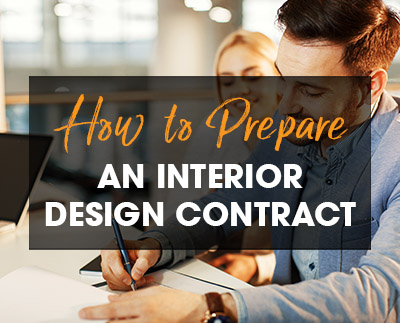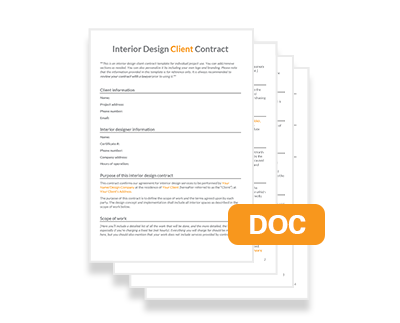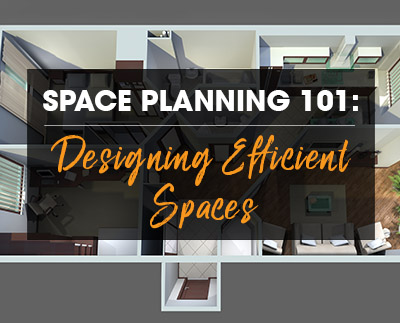
A well-drafted interior design contract will serve as an agreement between you and your clients and will include a detailed list of the scope of work, pricing, payment terms, insurance policy, and more.
Signing a formal interior design contract is important for your business. It will help protect you should there be a misunderstanding or disagreement along the way. As long as the contract is clear and both parties have signed, the designer (you) will not be held liable.
If you’re not sure how to draft a legally binding interior design agreement, continue reading this post.
Once your contract is complete, it might be a good idea to have a lawyer review it just to be sure you’ve covered all your bases (some states/countries have varying laws – the list below is simply a general guideline to follow).
Download our interior design client contract template.
Steps to preparing an interior design contract
The basics: This might be an obvious first step, but your contract should include your name/your business’s name, address, phone number, and your license number (if you have one).
Scope of work: Here you’ll include a detailed list of all the work that will be done, and the more detailed the better, especially if you’re charging a fixed fee (not hourly). Everything you will charge for should be mentioned, but you should also mention that your work does not include services provided by contractors such as plumbing, electrical, ventilation, etc.
Design fees: First you need to decide how you will charge your clients. Will you charge by the hour? Will you charge a fixed fee? You’ll have to write down what your going rate is, and if you’re charging by the hour, you should mention that all time that is spent on the project will be considered design fees (e.g., answering client emails/phone calls, researching, purchasing products, drawing, making modifications to plans, etc.). You can also mention that the design fees will be charged in increments and should be paid upon receipt of invoice.
Drawings: Your drawings, plans and renderings are conceptual in nature and are intended to set forth design intent. Your drawings also rely on the validity and accuracy of the information provided by the client, therefore you’re not liable for any miscalculations or design flaws caused by inaccurate information. You can also mention in your interior design contract that your drawings are to be used for this specific design project only and cannot be used by the client for any other purpose.
Purchasing: It must be written in your contract that you will not purchase any goods for the project until a deposit has been made by the client to pay for said goods. If the client wishes to make the purchases directly from the vendors, you can specify that in the contract, too.
Refunds & cancellations: Once furnishing items are purchased or an order has been placed, they will most likely be non-refundable, especially custom-made order. As such, your interior design contract should mention that you will not reimburse the client if a refund from the vendor or a cancellation of the order are not be possible.
Reimbursable expenses: Your contract must include a clause that indicates that your client agrees to reimburse you for any out-of-pocket expenses you incur related to the interior design project. For example, your client would reimburse you for travel costs (if any), postage charges, storage costs, etc.
Payment terms: You must state clearly in your contract the expected timeframe and terms of payment. If you will be invoicing your client periodically, you should mention the number of days they have to pay you in full after receipt of your invoice (10 days, 14 days, 30 days, etc.). You can also include a clause that states you will stop all work should the invoices not be paid on time.
Contractors & consultants: Since you are an interior designer and not a contractor or a consultant, you should not be held accountable for their work. The client should sign a separate agreement with the contractor; your contract should mention that you do not provide a warranty or guarantee of their part of the project, and the quality of their work and performance depends entirely on them. However, you can reassure your client that you will supervise the work being done to make sure your designs are on track.
Insurance: Your interior design contract should include a section about insurance coverage. Your client is required to have insurance coverage for all furnishings and materials during handling, moving, storage, and installation. You should also have sufficient insurance for the project you are undertaking.
Photographs: Taking photographs of your projects is great for your marketing efforts and to grow your portfolio. Make sure your client signs off on you taking photos of the house before, during and after the project is complete. The contract should also state that you can use those photos for business purposes, including sharing on social media, press, publications, advertising, etc. You will obviously never disclose the address of the client without their permission.
Termination: The client can terminate the agreement at any time by notifying you in writing. However, the client will be responsible for all outstanding fees and charges.
Share this Post





